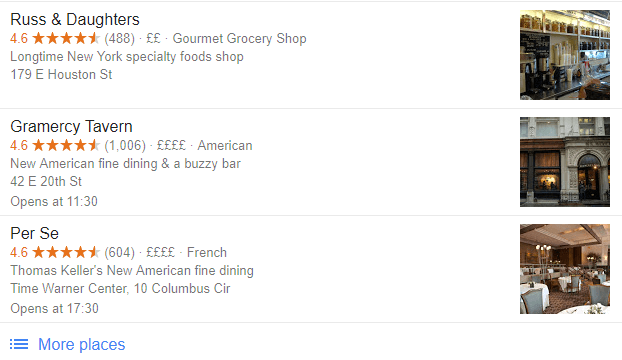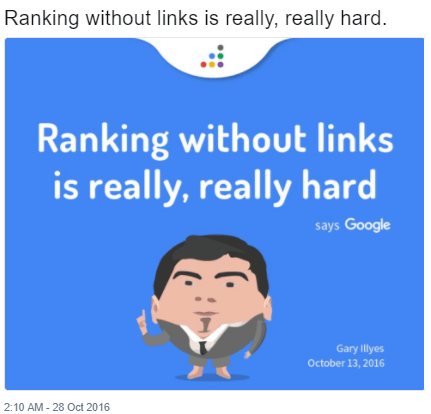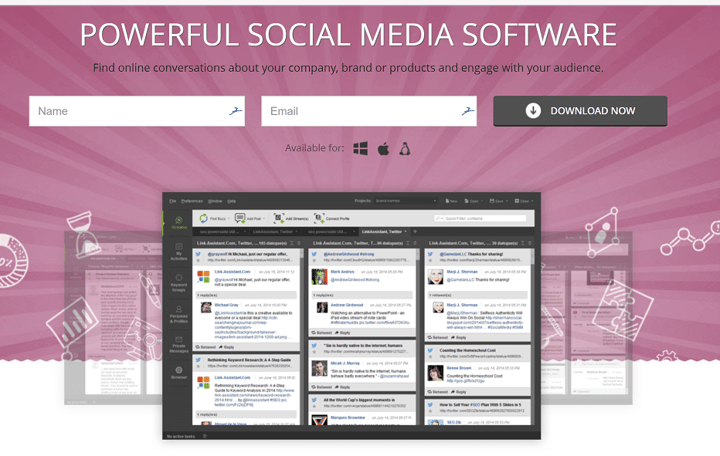Why Your Online Shop Needs Product Reviews
Product reviews can have a big impact on your online shop. Whether it's conversions, building trust, or SEO, learn why your shop needs product reviews.

Not sure how your SEO budget would be best spent? Have you been drowning in a sea of reports and tools? Got another 404 page?
Don’t worry – SEO is a continuous learning process. The more you put in, the more you will get out of the whole exercise. It’s a very stable sales channel for e-commerce websites, and has a great ROI (if done right).
First of all — the first tip I can provide is that you'll probably want to hire a professional (even if it’s just part-time) if SEO is genuinely important to you.
They will put you on the right path and keep you up to date with the latest information you’ll need in order to be successful. SEO is a complex discipline, and you need the support of an agency or consultant to ensure that budgets are being correctly allocated, tracked, and attributed.
Here are a few great ways to spend your SEO budget for your e-commerce or retail business order to create a genuine brand and sales uplift.
Even successful businesses develop blind spots over the years — and they can sometimes become fatal. It’s important that you keep renewing your commitment to your SEO strategy — which means continued audience research. The people buying your products now may be different from the people who wanted them 6 months ago.
Make sure that thorough audience, keyword, and content research are at the heart of your SEO strategy. There is nothing worse than wasting company budget on strategies and tactics that simply aren’t going to work for you. In today’s data-driven world, there is no excuse for poor audience targeting.
Get back to basics and start with granular keyword research and audience research that takes into account how your business looks and feels today. Always be looking for ways to deepen and improve your understanding of your core buyer personas.
As well as keywords, get to know your audience’s content habits. Buzzsumo is a fantastic (if somewhat pricey) content research tool that can help you identify key industry players and topics at the click of a button:
Keep deepening your understanding of your niche and pay attention to where your customers "hang out" online.
Technical SEO is by no means dead — it is alive and kicking — and it’s a great way for you to invest some company time and budget. For an e-commerce business, a well-functioning website is a must-have, so it’s essential to be constantly ticking off technical tasks.
A thorough technical SEO audit should be step one. After all, there is no point in spending money to market a website that doesn’t have the right structural foundations.
Recommended reading:
What Is a Crawl Budget and How Can You Use It to Improve Your Ranking?
This audit should yield a 6-12 month SEO plan with plenty of tasks for development, design, and content teams. This will probably be an ongoing process as your site develops and your products change and evolve.
When you are confident that the technical SEO basics are covered, you can also look to technical SEO for added value. You’ve probably already heard of Schema markup. But do you know just how important it can be for your business?
See schema in action below:

Structured data is just one of the key ways that you can improve your website’s ability to rank well in search engines.
Implementing markup requires minimal time and monetary investment, and can yield great results for your business. Rich results (formerly known as rich snippets) drive a tonne of engagement and traffic; sites using rich results can enjoy up to a 30% increase in click-through rates.
To make sure you’re not missing out on this potential, here are a few examples of elements on your site that you should mark up:
A full list of available markup codes can be found here. It’s very easy to do: a simple addition to your site’s code will mean that you’re permanently set up with markup.
Local SEO and local search are hugely relevant in today’s mobile-first world. People want fast and accurate answers — especially when it comes to finding things to buy.

Shutterstock/eamesBot
Regularly fact-checking your local search data is highly recommended, as out-of-date or erroneous data can mislead customers and lead to you losing out on valuable business. Let’s face it – if your store’s opening hours are marked incorrectly, then your customers are probably going to be irritated when they turn up on a day that you are closed!
You need to be in control of all of the business data submitted across platforms such as Yelp and Google Maps. They rely on crowd-sourced reviews and ratings for search queries, so get to grips with how to improve your current standing. Encourage customers to review you online and submit data, and always respond to any negative comments or reviews openly. (But keep anything customer-specific to private conversations).
You will also want to ensure that you have enough local-specific content on your domain to warrant local rankings, as well as courting partnerships from local sites and influencers.
Chambers of commerce, business groups, and local charities are all awesome sites to partner with, so don’t neglect your neighbourhood.

Credit: christoph cemper
Getting high-quality, natural backlinks is hard.
With the difficulty of link building increasing, it’s time for brands to diversify the ways in which they source mentions and links.
Gone are the days when automated link building, blog comments, and directories were the tactics driving SEO results — nowadays brands are much better off digging in and finding compelling brand stories that are likely to engage and create a sense of community.
Open up the barriers and think about how you can use storytelling and PR to put your brand on the map.
Some tips on how to create newsworthy content:
Did you know that influencer marketing can help to create authoritative mentions with the additional benefit of increasing your user engagement, traffic, and search visibility? Working with influencers is a great way to seed your brand with a whole new network of potential customers and increase brand awareness.
Create campaigns that are related to specific topics or issues, rather than making the influencer an extension of your sales team.
You should definitely consider working with smaller, expert influencers. Product reviews are great for SEO, and will help build trust and legitimacy amongst your core users and customers. You’ll want to partner with passionate micro-influencers who are going to lend their expertise to the review.
Think about whether video reviews might actually make a more compelling value proposition? YouTube can be a great source of relevant web traffic, and through clever optimization, you can secure top spots. Video reviews are always popular with potential customers as they give people so much compelling data that they couldn’t get otherwise. Even less obvious offerings like software and services can benefit from a detailed video exposition.
Investing some of your SEO budget into influencer marketing can help you simultaneously gain trust and digital exposure. You can do this all yourself by manually searching for and contacting influencers, or by using a platform like NeoReach.
Just make sure that you are clear on your goals and intentions before you dive in, as these sorts of partnerships can be expensive and tricky to manage. Having open and transparent conversations is essential to make stuff like this work, and you have to put yourself in their shoes as well. What are they looking for in a brand partnership, and why?
Your entire website is part of your SEO strategy — so don’t let it become neglected or outdated. Make sure that you are still investing enough design and development time into your website so that it stays looking fresh and up to date.
Here are just some of the very basic web development and SEO elements you and your team need to stay on top of:
It can sometimes be hard to book in developer time, but it’s so worth it in the long run. An hour of their time can help you quickly blitz a tonne of (potentially very expensive) SEO issues. Just make sure that you opt for a trusted CMS that’s going to make your life easier in the first place — not harder.
Social media can be a powerful driver of referral traffic, and shouldn’t be overlooked when designing your digital strategy. It goes without saying that you need to invest in a robust social media strategy if you want to make the most of it.
Recommended reading:
How to Define and Adhere to Your Social Media Budget
Software like Buzzbundle can help you scale your social media promotional efforts. This is an area that is ripe for automation and AI.

Paid traffic complements organic traffic. Facebook advertising is a great match with SEO — especially for e-commerce brands. Don’t set social media advertising and SEO up against each other — run concurrent campaigns with similar messaging and landing pages.
Probably the worst thing any business could do with their SEO budget is to ignore the rest of your digital strategy when planning out SEO campaigns, improvements, and upgrades.
SEO should work in tandem with social media, content, email marketing and all the other digital mediums and tactics deployed by your business. When planning out an editorial calendar for example, think about how SEO campaigns will contribute.
SEO needs to be at the heart of your business is order for it to make any real commercial difference. Don’t just track vanity SEO metrics — look at brand uplift, sales, and all the other business data points you’re tracking.
SEO is evolving, and so should your strategy and budget. Don’t do the same things you did five years ago — in SEO, that means trouble!
24/03/21Product reviews can have a big impact on your online shop. Whether it's conversions, building trust, or SEO, learn why your shop needs product reviews.